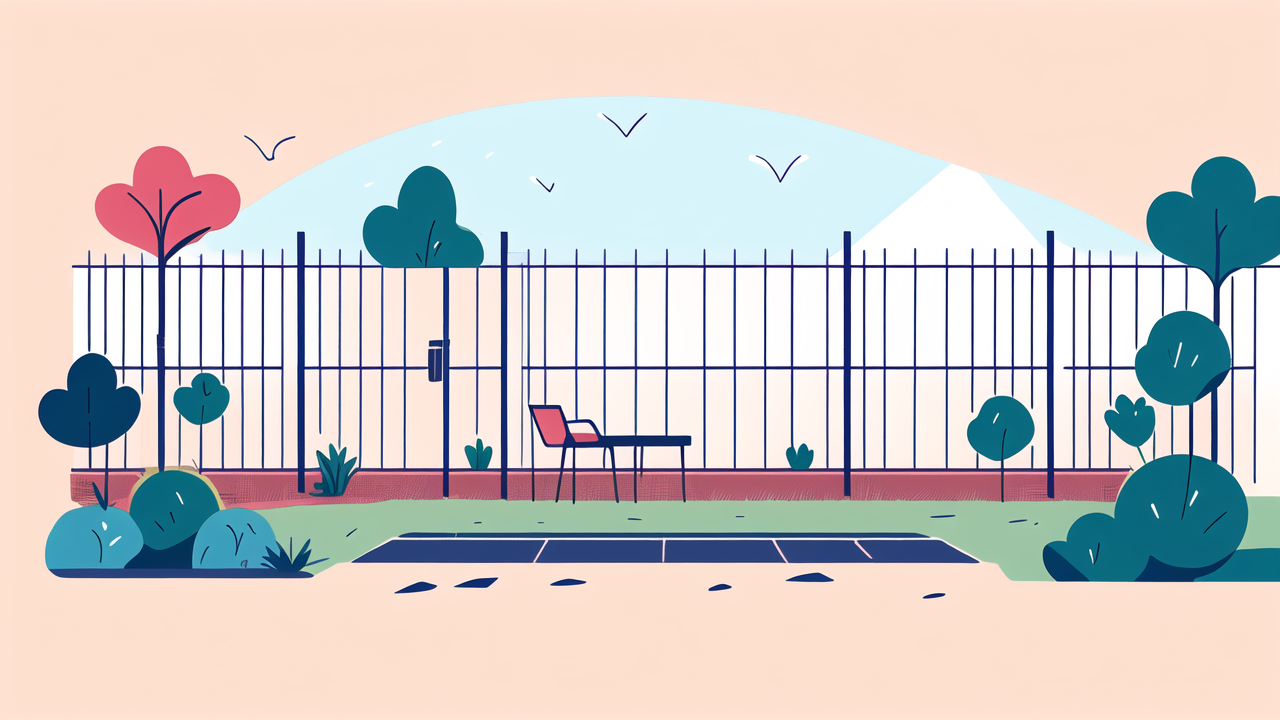Understanding Composite Privacy Fences
The Rise of Composite Fencing in Residential Gardens
Composite fencing has gained popularity in recent years. It offers a blend of durability and style. Many homeowners are choosing it over traditional wood fences. Composite fences are made from a mix of wood fibers and recycled plastic. This combination creates a strong, long-lasting product.

These fences resist rot, decay, and insect damage. They don't need painting or staining. This makes them a low-maintenance option for busy homeowners. Composite fences come in various colors and textures. They can mimic the look of natural wood without the upkeep.
The initial cost of composite fencing is higher than wood. But, the long-term savings on maintenance make it cost-effective. As more people seek eco-friendly options, composite fencing fits the bill. It uses recycled materials and lasts longer than traditional fences.
Key Benefits of Composite Privacy Fences
Composite privacy fences offer many advantages. Here are some key benefits:
- Durability: They resist weathering, rotting, and insect damage.
- Low maintenance: No need for painting, staining, or sealing.
- Eco-friendly: Made from recycled materials.
- Consistency: Uniform color and texture throughout the fence.
- Versatility: Available in various styles and colors.
- Longevity: Can last 20-30 years with proper care.
- Stability: Doesn't warp or splinter like wood.
These fences provide excellent privacy. They're perfect for creating a secluded backyard oasis. The material is sturdy and can withstand high winds. This makes it a good choice for areas with extreme weather.
Composite fences are also child and pet-friendly. They don't have sharp edges or splinters. This reduces the risk of injuries. The smooth surface is easy to clean, making it ideal for families.
Installing Shelves on Composite Privacy Fences
Selecting the Right Shelf Materials
Choosing the right materials for your fence shelves is crucial. You want shelves that complement your composite fence. They should also be durable and weather-resistant. Here are some options to consider:

- Composite shelving: Matches the fence material perfectly.
- Treated wood: Affordable but requires more maintenance.
- PVC: Lightweight and resistant to moisture.
- Metal: Sturdy but may rust if not properly coated.
- Recycled plastic: Eco-friendly and durable.
Consider the weight capacity you need. Think about what you'll place on the shelves. Plants and garden tools have different weight requirements. Ensure the material can support your intended use.
Color is another factor to consider. You can match the fence or choose a contrasting color. Some materials allow for painting or staining to achieve your desired look.
Step-by-Step Guide to Installing Shelves
Installing shelves on your composite fence is a DIY-friendly project. Follow these steps for a successful installation:
- Measure and mark: Decide on shelf placement. Mark the spots on your fence.
- Prepare the fence: Clean the area where you'll attach the shelves.
- Choose mounting brackets: Select brackets that can support your shelf weight.
- Attach brackets: Use screws designed for composite material to secure brackets.
- Level check: Ensure brackets are level before fully tightening.
- Place the shelf: Set the shelf on the brackets and secure it.
- Test stability: Gently push on the shelf to check its sturdiness.
- Add finishing touches: Apply sealant if needed to protect screw holes.
Always pre-drill holes in composite fencing. This prevents splitting or cracking. Use stainless steel or coated screws to prevent rust stains on your fence.
Tips for Secure Attachment and Longevity
To ensure your shelves last as long as your composite fence:
- Use corrosion-resistant hardware.
- Don't overload shelves. Follow weight limits.
- Apply silicone sealant around screw holes.
- Choose brackets with a lip to prevent shelf slippage.
- Consider adding support underneath for heavy items.
- Space shelves evenly for a balanced look.
- Use shelf liners to protect the surface from scratches.
Regularly inspect the attachment points. Tighten any loose screws promptly. This prevents damage to your fence and keeps shelves secure. In high-wind areas, consider removable shelves for storm season.
Maintenance and Upkeep
Routine Care for Composite Fence Shelves
Proper maintenance keeps your fence shelves looking great. It also extends their lifespan. Here's a simple routine to follow:

- Regular cleaning: Wipe down shelves with mild soap and water.
- Inspect for damage: Check for cracks or loose parts monthly.
- Remove debris: Clear leaves and dirt that can trap moisture.
- Seasonal check: Tighten hardware before and after winter.
- Apply protectant: Use a UV-resistant spray annually.
- Trim nearby plants: Keep vegetation from growing onto shelves.
- Winter care: Remove snow buildup to prevent water damage.
For composite shelves, avoid harsh chemicals. They can damage the material. A soft brush can remove stubborn dirt. Always rinse thoroughly after cleaning to prevent soap residue.
Identifying and Addressing Common Issues
Even with proper care, issues may arise. Here are common problems and solutions:
- Fading: Apply UV protectant or consider replacement.
- Warping: Check for water damage and improve drainage.
- Loose brackets: Tighten screws or replace if stripped.
- Mold growth: Clean with vinegar solution and improve air flow.
- Scratches: Sand lightly and touch up with matching paint.
- Sagging: Add additional support or reduce weight on shelf.
- Stains: Use a composite-safe cleaner to remove.
Address problems quickly to prevent further damage. Regular inspections help catch issues early. This saves time and money on repairs in the long run.
When to Seek Professional Help for Shelf Maintenance
While many maintenance tasks are DIY-friendly, some situations call for a pro:
- Structural damage to the fence
- Large cracks or splits in shelves
- Severe warping that affects stability
- Pest infestations in or around shelves
- Water damage that's spread to the fence
- Complex repairs requiring special tools
- Issues covered under warranty
If you're unsure about a repair, it's best to consult a professional. They can assess the problem and provide expert solutions. This ensures your fence and shelves remain safe and functional.
Remember, proper installation and maintenance are key. They help your composite fence shelves last for years. With these tips, you can enjoy your expanded garden space worry-free.
